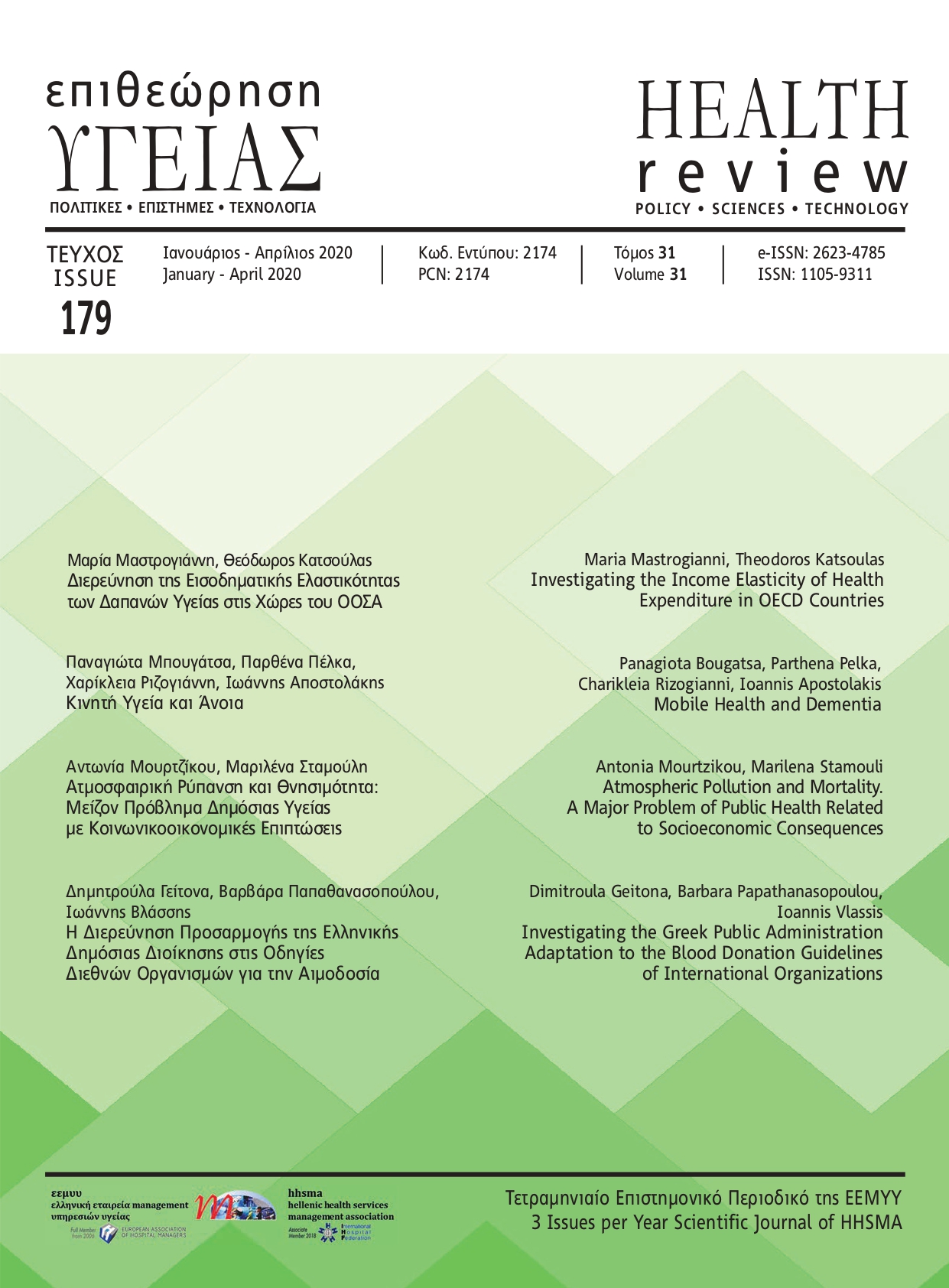Abstract
Introduction: The long-term increase in both health expenditure as a whole and its individual components (hospital, pharmaceutical expense) at rates higher than Gross Domestic Product (GDP) has garnered the interest of the scientific community. At the same time, policies for restraining health expenditure have been adopted internationally. An important tool for establishing health policies is the knowledge and the determination of the income elasticity of health expenditure.
Aim: To investigate the income elasticity of health expenditure for OECD countries. Specifically, to review the price of income elasticity of health expenditure calculated in international studies conducted over the last decades for OECD countries.
Method: A systematic review of papers published up until July 2018 was conducted. Search was performed on PubMed, Medline, Scopus, Science Direct and OECD. The criteria for inclusion in this review, which follows Prisma Checklist guidelines, were the study and calculation of the income elasticity of health expenditure in OECD countries using time-series, cross-sectional data or a combination of them.
Results: Only 21 of the scientific papers retrieved met the criteria for inclusion in this review. Twelve of them, using panel data and calculating the income elasticity less than one, ranked the health good in normal goods, while the others, using either time-series or cross-sectional data, ranked it in the luxury goods.
Conclusions: Earlier studies before 2000, using either cross-sectional or time-series data, led to the conclusion that health is a luxury asset, while recent studies, using panel data, which is the most reliable method, concluded that health is classified as a normal good.
